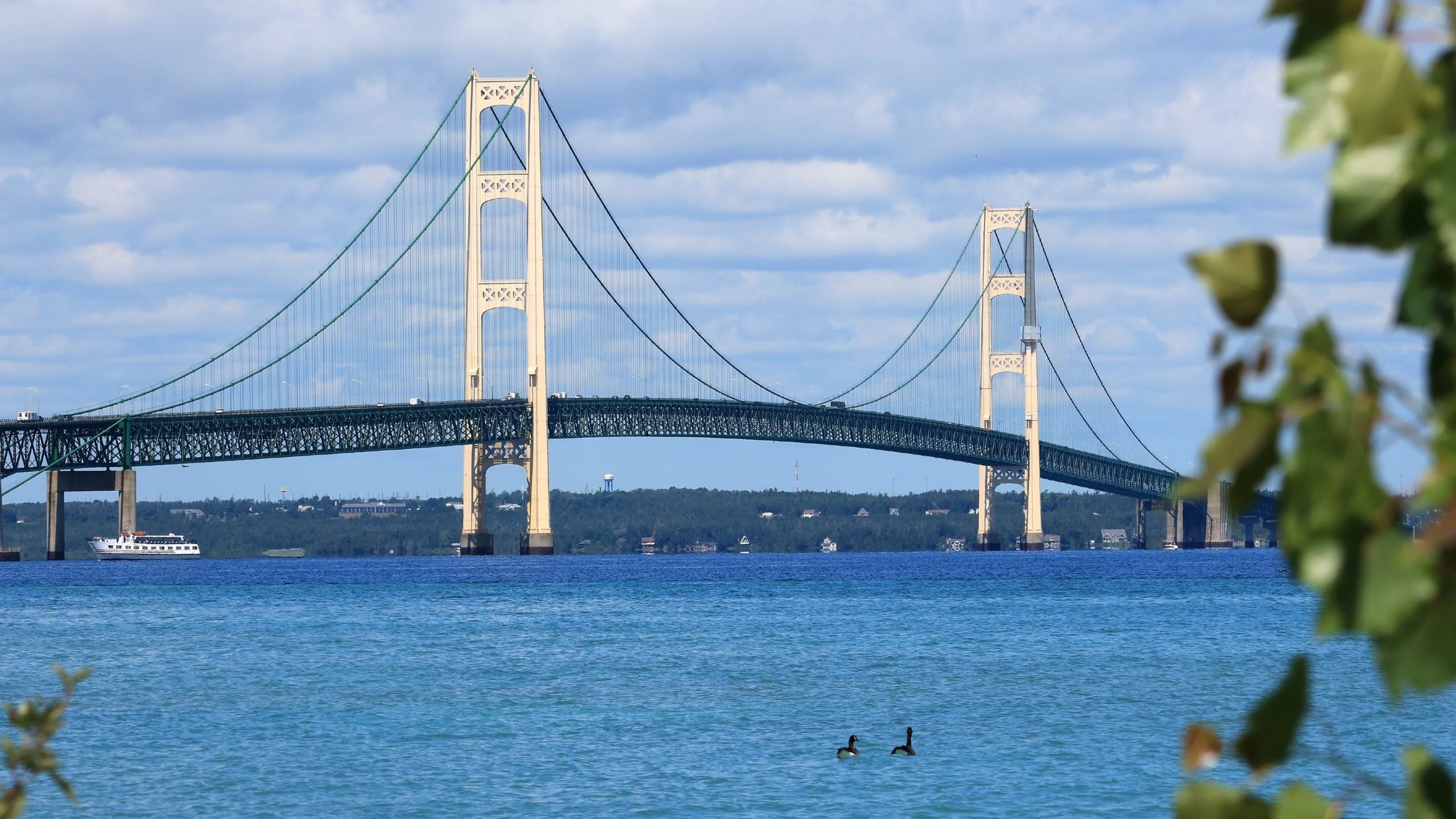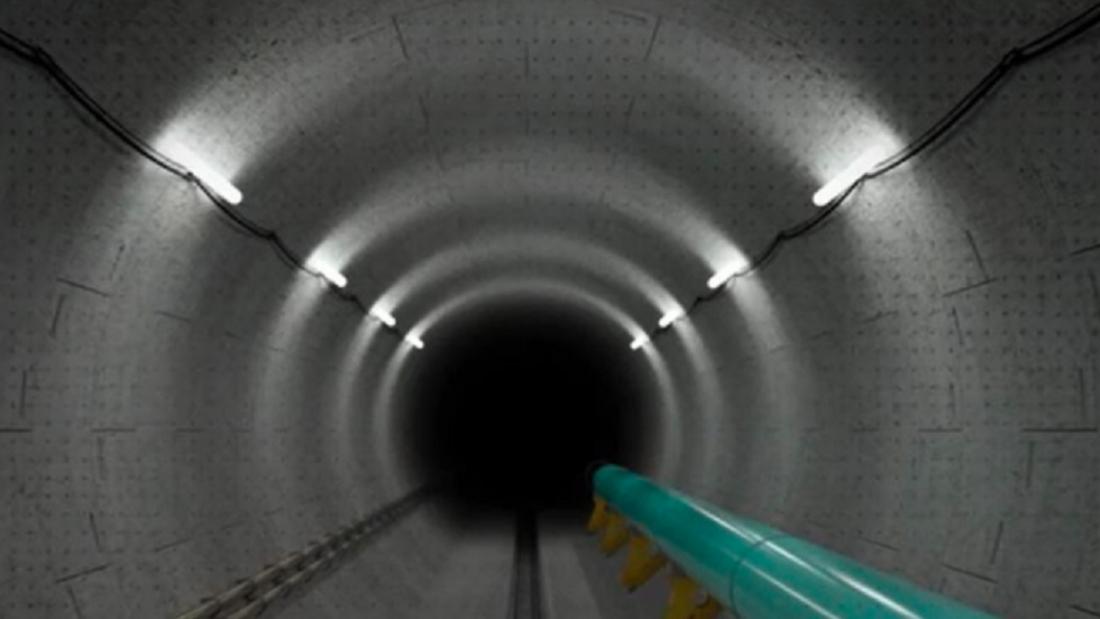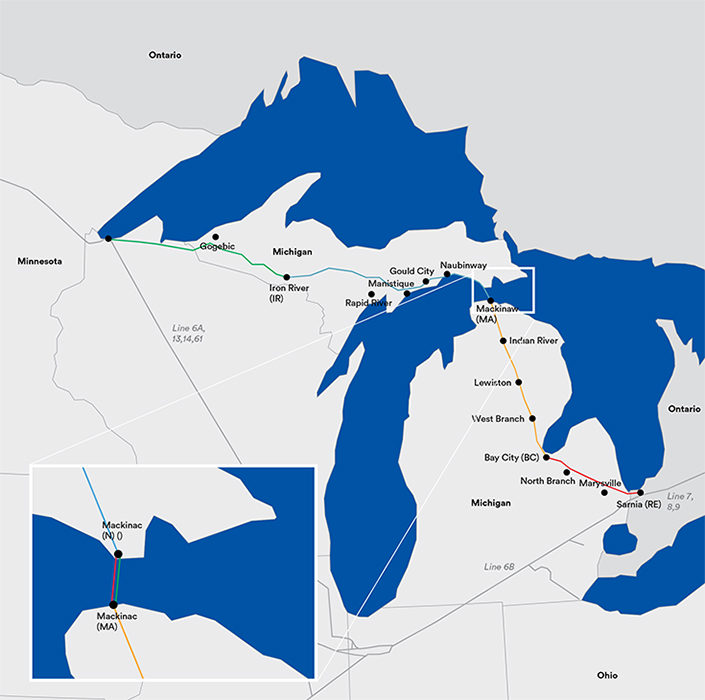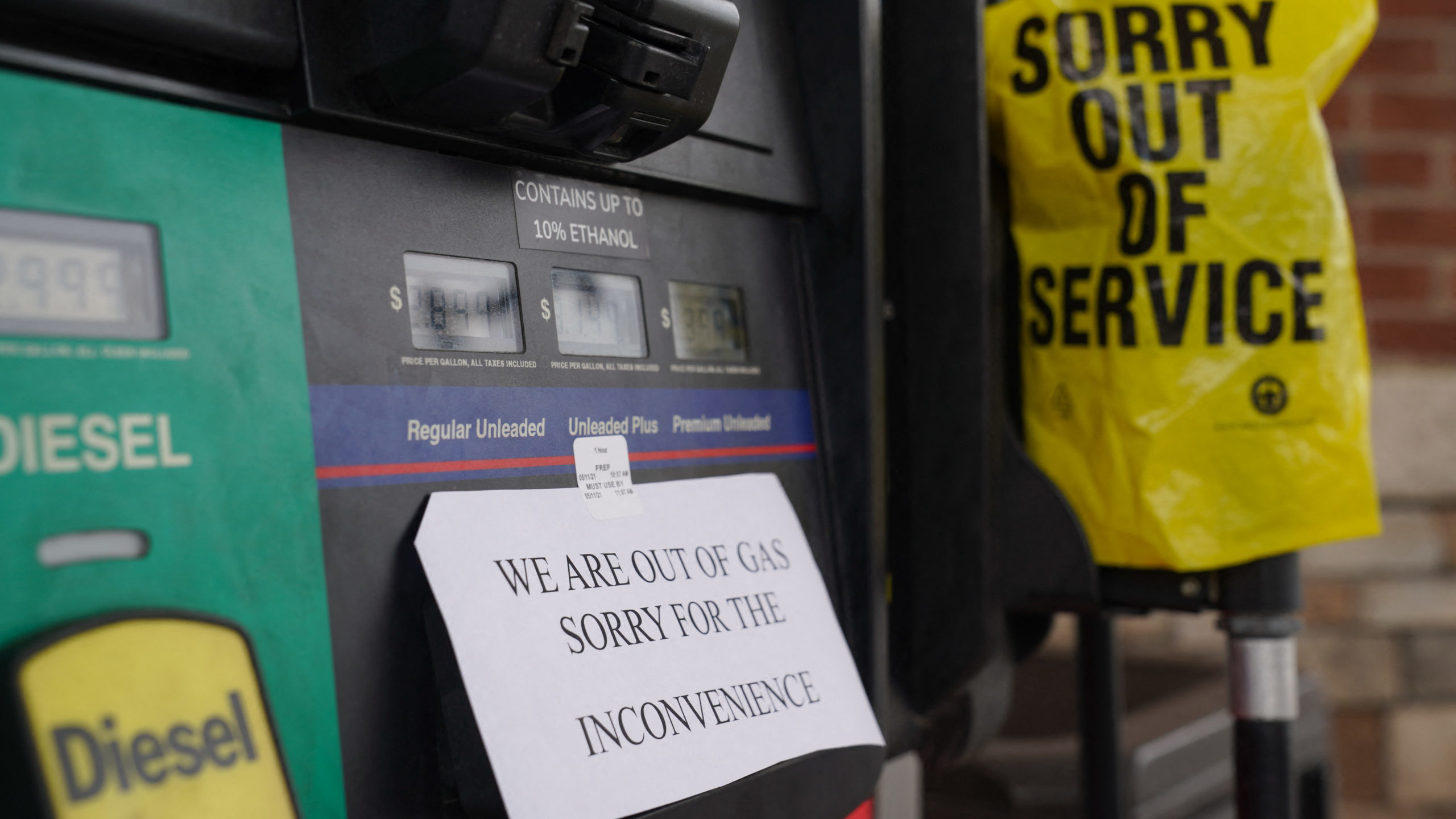An environmental group proposing a laundry list of unrealistic alternatives to replace Line 5 ignores many key facts and realities about the critical cross-border pipeline.
Environmental Defence argues that the closure of Line 5, which runs from Superior, WI to Sarnia, Ont., including a 7-kilometre stretch where it crosses Michigan’s Straits of Mackinac, is “inevitable,” downplaying the potential devastating impact of its closure on both sides of the border.
The group suggests a combination of upgrades to existing pipeline infrastructure, increased rail or marine tanker traffic or the use of even older pipeline infrastructure, however the report acknowledges the likelihood of rationing supply to Canadian refineries, higher prices at the pump and the need for increased imports from foreign suppliers to meet demand.
Despite suggesting “alternatives” to replace the supply of critical energy products via Line 5, the report concludes that the pipeline’s closure should be accompanied by a strategy to abolish the use of fossil fuels in Canada along with a “just plan” for the thousands of Canadian industry workers whose jobs would be impacted by such drastic action.
Here is what Environmental Defence is not acknowledging in their report:

Fact: The closure of Line 5 is not remotely “inevitable”
While the report suggests the pipeline’s fate is sealed and will be ultimately closed “either through court order or due to a rupture,” there is little evidence to support either claim.
On the legal side, Line 5’s most ardent opponent, Michigan Gov. Gretchen Whitmer, has struggled to make the case that the fate of the pipeline is a state issue, and not the jurisdiction the federal courts, which both pipeline owner Enbridge and the Canadian government have argued in favour of.
Last November, a U.S. Circuit Court Judge sided with Enbridge against a move by Michigan’s battle to have their case against Line 5 heard in a state court, noting the case involves “substantial federal issues.”
Shortly after the ruling, Whitmer abandoned the federal case and renewed focus on a state court action originally filed in 2019 against Enbridge by Michigan’s attorney general.
Meanwhile, the Canadian government, arguing the pipeline is a critical source of resources to Ontario and Quebec, have invoked a 1977 treaty designed to ensure the uninterrupted flow of cross-border energy between the two countries.
The White House has said it has no immediate plans to call for the pipeline’s closure, and will continue talks with Ottawa on the future of the line.

Fact: Line 5 remains very safe
The report further suggests that an environmental disaster in the Great Lakes due to the pipeline’s rupture is a near certainty, despite offering little in the way of evidence that the section under the Straits of Mackinac is an imminent threat.
In its 68 years of operation, Line 5 hasn’t had a single release where it runs between Lake Michigan and Lake Huron. The walls of the dual pipelines are three times as thick as those of a typical pipeline, with an “incredibly durable” enamel coating to protect from corrosion and potential impacts, Enbridge says, while the area above the pipeline has been designated a “no-anchor” zone.
Despite the spotless safety record of that section, Enbridge is working to make the critical connector even safer, with a planned Great Lakes Tunnel project, which will replace the existing Line 5 with a new pipeline secured inside a concrete tunnel located approximately 100 feet below the lakebed.
The U.S. Army Corps of Engineers is now conducting an environmental impact statement review of the project, while the Michigan Public Service Commission’s permitting process is ongoing. Construction is expected to take approximately three years to complete, following regulatory approvals.

Fact: Line 5 is important for regions beyond just Ontario and Quebec
While the report largely focuses on the impact to refineries and consumers in the provinces of Ontario and Quebec, it downplays the importance of Line 5 providing crucial feedstocks to refineries in several US states, and the impact of its closure on Americans.
Line 5 supplies about 45 per cent of the petroleum currently required by refineries in Ontario, Quebec, Michigan, Ohio and Pennsylvania.
Oil and natural gas liquids delivered on Line 5 is processed into gasoline, diesel, jet fuel and propane, including 100 per cent of the jet fuel used at Toronto’s Pearson Airport and more than half of the jet fuel for the Detroit Metro Airport.
Line 5 also provides about 55 per cent of propane requirements, primarily for heating, in Michigan, the largest residential consumer of propane in the US.
While the report estimates Canadian consumers would see what the authors deem a marginal impact, paying an extra 1.8 cents per litre on gasoline, it ignores other independent studies that have reviewed the potential impact on US customers.
A study conducted on behalf of the State of Michigan found that alternatives to Line 5 would likely increase the price of propane on both a wholesale and retail level.
The Mackinac Centre for Public Policy estimates that if Line 5 were shut down, Michigan residents could have to spend $25,000 to convert from propane to electric heating, followed by a $3,500 annual increase to their annual heating costs. That could affect 330,000 Michigan residents.

Fact: Demand for oil and gas in North America will only increase
The report weighs the potential environmental risk of the Line 5 pipeline against whether it’s “actually needed to meet our energy needs.”
However, the idea that the closure of one pipeline would achieve that end is extremely debatable given between the U.S. and Canada there is an existing network of more than 450,000 kilometres of pipelines, enough to circle the Earth 11 times, that move millions of barrels per day of crude oil, natural gas, and refined petroleum products between the neighbouring nations.
The report further suggestions Canada needs to abandon the notion of “energy nationalism” and embrace the “ability of refiners to import from global markets over an energy nationalism model where Canada meets domestic demand first, and only exports excess.”
But regional energy security has only become more critical as global economies emerge from the Covid-19 pandemic. Last year, US President Joe Biden’s plea for OPEC+ nations like Saudi Arabia and Russia to pump more oil to meet soaring domestic demand and lower gas prices was snubbed. Meanwhile, the European Union accused Russia of “weaponizing” its natural gas supply amid a massive spike in energy prices prompted by underperforming renewable energy assets.
Demand for oil and gas in Canada and the US, meanwhile, will remain significant for decades to come.
Outlooks by both the Canada Energy Regulator (CER) and U.S. Energy Information Administration (EIA) project that oil and gas will continue to dominate energy supply to 2050. The reference case of the CER’s latest outlook sees natural gas and refined petroleum products meeting 73 per cent of Canadians’ energy needs in three decades, compared to 77 per cent in 2020.
In the CER’s “evolving scenario,” which assumes actions to decarbonize increase, natural gas and refined petroleum products supply 64 per cent of Canadian demand in 2050.
Meanwhile, the EIA’s latest outlook base case sees oil and petroleum supplying 70 per cent of total U.S. energy consumption in 2050, essentially the same as their market share in 2020. In the EIA’s scenario that includes lower costs for renewable energy development, oil and gas still meet 67 per cent of U.S. energy demand in three decades.
The unaltered reproduction of this content is free of charge with attribution to Canadian Energy Centre Ltd.
